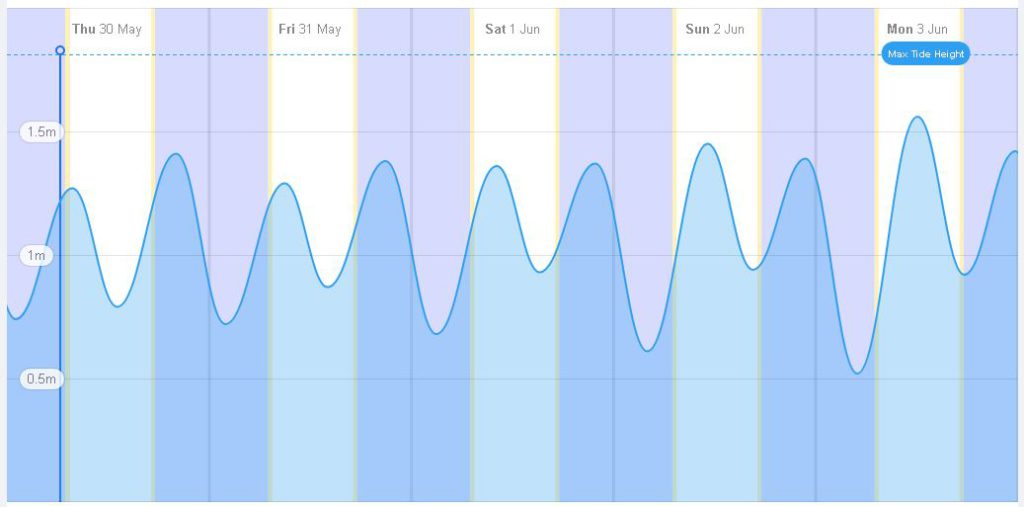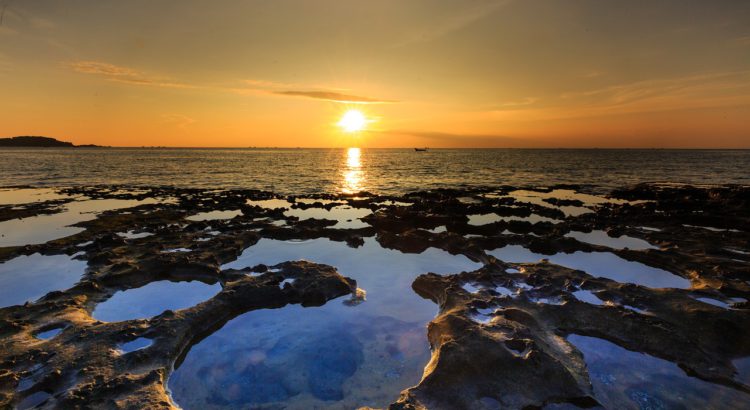When it comes to land-based fishing ocean tides can play a significant role in determining your success rate. High and low tides can be strategically used to target particular species.
To find out the tide conditions in your local area a quick google search won’t hurt. There is a ton of different weather forecast sites on the internet.
An example below shows the high and low tide points for a local beach in Port Melbourne as compared to a surf beach in Gunnamatta.
Significantly different in terms of tide heights and tide timing. The two graphs below show areas that are an hour and a half drive from each other. Prior to fishing, it’s best to check tide conditions as it’s ever-changing from area to area.

Graph produced from willyweather.com.au

Graph produced from willyweather.com.au
How to use low tides for fishing?
What does low tide mean for us? During Low tide, a lot of structure is exposed and we can identify sandbank drop off’s, channels, gutters, and drains. During run-out tides leading to low tide often you’ll find baitfish retreating to deeper waters.
Ambush predatory fish such as Flathead use run-out low tides to hide in these structures to prey on retreating bait fish. Fishing leading up to low tide or as the current picks up from low tide can be quite effective.
How to use high tides for fishing?
Opposite to low tide, During high tide, a lot of the structure that was previously exposed has now been submerged. These areas become accessible to foraging fish such as Bream and Whiting.
These guys forage for yabbies, pipis or sand worms at high tide. Run-in tides leading up to high tide bring in these guys to otherwise exposed feeding areas.
What is the perfect tide for fishing?
Well, to answer this question the perfect tide will be determined by the species your targeting. Generally, a good rule of thumb is to fish during a running tide either a run-out or a run-in.
Ideally, you want movement in the water. Run-out tides will be used to target ambush predatory fish while run-in tides bring in foraging fish.

I personally never tried to go fishing just because I never knew how to catch a fish and then you have to get all the necessary equipment to go fishing and most important of all, you have to be patient, something that I don´t have, but with this explanation about the ocean tides and when is the right time to go fishing, I think this will be really helpful for me if I want to do something like this one day. Thank you
Hi Barbara,
Thank you for taking the time and reading my post. Fishing does require patience but you can greatly increase your chances by finding the right location, considering the right tide and using the right bait. Hopefully, you do decide to try fishing one day cause it can be quite enjoyable 🙂
Cheers,
Vinnie
“Fishing leading up to low tide or as the current picks up from low tide can be quite effective.”
Does this mean either side of low tide? Would this be equally parts/time either way? And when you say ‘as the current picks up’ , are you saying as the tide starts to come in, the current will also increase in speed? especially in deeper water)
Also, is a run out tide the same as a falling tide? (Perhaps I’ve seen too many ads with ‘run out sales’, but the term is unfamiliar to a novice like me:) )
Thanks for the excellent post. Very helpful to learn about fish behaviour